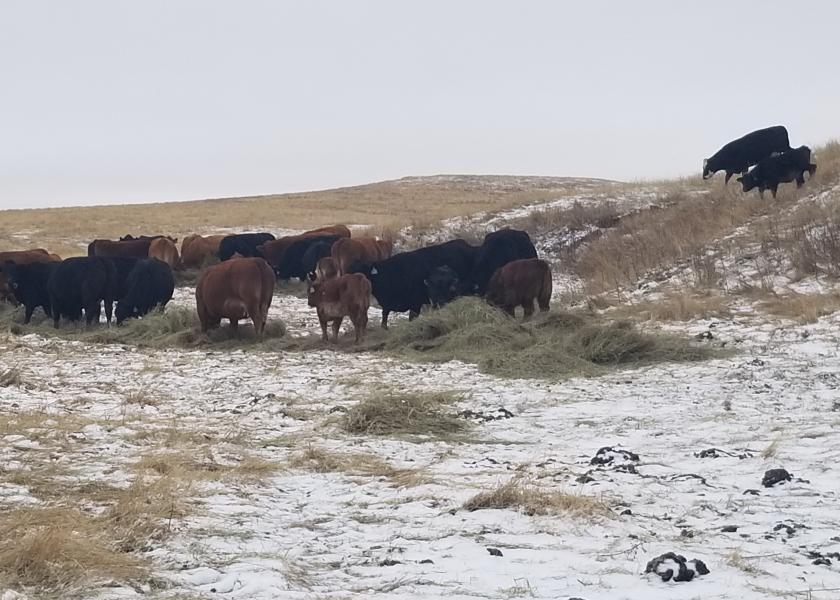Despite Mild Winter, Spring May Bring Forage Challenges

This year’s warmer and drier winter conditions have created certain benefits for ranchers, such as easier winter feeding and simpler maintenance of water supplies. A major benefit of milder conditions is that cold weather stressors on the cow herd are lower, making it easier to meet cattle nutrient requirements.
As helpful as this mild weather has been, there are potential concerns ranchers should be aware of and be prepared for this spring, according to North Dakota State University Extension forage crops production specialist James Rogers.
“The Northern Plains is a fragile environment subject to extreme heat, cold and limited rainfall,” Rogers says. “When these extremes occur, it can create instability in the system with long recovery periods. Looking at the forecast weather model from the National Weather Service Climate Prediction Center, the El Nino effect of warmer, drier weather is predicted to continue to the spring.”
Forecast models are predicting continued above-normal temperatures with equal chances of above- or below-normal precipitation. In 2023, precipitation varied across North Dakota from below normal in the northern tier of the state to normal or above normal in the southern portion of the state. If the weather forecast models hold true, the implications for spring can mean one thing for the crop farmer and another for the rancher.
For the crop farmer, above-normal temperatures could mean earlier planting conditions compared to previous years. Potential downsides include early weed emergence and the uncertainty of receiving the precipitation necessary to get crops up and going.
For the rancher, a few more variables can cloud the picture. The first is how pasture and range plants were managed prior to the end of the grazing season. Fall is a time when pasture and range plants are storing energy for spring growth. The basis for forage production is tiller production and growth. If tiller production is reduced, forage production will be lowered.
An NDSU study evaluated the effect of the intensity of fall grazing on forage production the following year. They found that severe fall use reduced forage production by 57% in 2022 and 54% in 2023.
“Severe fall use of pasture and range plants has a negative effect on energy storage, bud formation and tiller production, which results in reduced forage production the following year,” Rogers says.
The second variable is unknown: What will spring conditions truly be? If temperatures continue to remain above normal, pasture and range plants will begin coming out of dormancy early. If precipitation remains below normal, biomass production could be delayed, meaning that spring turnout could also be delayed. On the other hand, spring could arrive late with late winter storms wreaking havoc on ranchers and livestock, as in the springs of 2021 and 2022. Rogers advises ranchers to be prepared for either situation and consider whether winter feed supplies are enough to stretch into spring.
The third variable is cow herd health and condition from now through spring. Calving season is underway and monitoring calf health, cow condition, herd bull health and management are all critical from now until the end of breeding season. Management now impacts rebreeding later.
“Current weather conditions are unusual for North Dakota, but take into consideration all variables, including previous months’ weather conditions, past grazing management, current weather and future weather predictions, and use them to be prepared for whatever the Dakotas throw at you,” Rogers advises.







